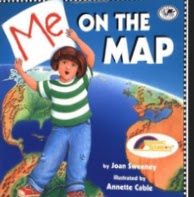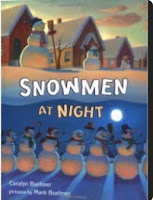As my first grade students left for their holiday break, I told one of the children to have a wonderful vacation. He sadly looked at me and said, "I'm not going on vacation. I am just staying home." I explained to him that by vacation I meant not coming to school. His reaction made me think about how many students never get to travel and experience the joy of visiting popular vacation destinations. It seemed, however, that a solution to that problem was sitting in my classroom waiting to be unwrapped!
I had an Xbox 360 Kinect system in my classroom. We were using Kinect games for learning and I had recently been given a copy of Kinect Disneyland Adventure. I took it home for my grandchildren to play while visiting for Christmas, and it turned out to be an authentic trip to the Magic Kingdom. Players enter Main Street USA, collect autographs from Disney characters in an autograph book, and use a map to select the lands to visit in the park. Pirates of the Caribbean, It's A Small World, and all of the other favorite rides from the actual park are part of the game. It is as close as you can come to an actual visit without traveling there.

Using the game as a basis, I planned a unit for my students to "go on vacation" while learning and using a variety of standards based language arts, math, and geography skills! Working collaboratively in small groups, representing families, the students used the internet to research and develop a plan for taking a trip to Disneyland. In an authentic planning experience, the students learned to read informational text, evaluate information, and make informed decisions. They learned map skills, using online travel maps and maps of the park. Math and personal financial literacy skills grew as the kids learned to use calculators, to work with large numbers, and realized that vacations require long term goal setting and saving. There were plenty of opportunities to practice writing skills as well, as they created travel brochures, journals, and postcards for the trip.
Here is a video of students telling about the project:
Here is an outline of the unit if you would like to take your class to Disneyland, just in time for Spring Break! (I created this learning activity for first and second grade students, but it can easily be adjusted for older kids as well.)
Pose questions: How can we get the things we want but don't necessarily need? Why is it important to have goals? How do you make a plan? What is research? How can a group work together to achieve a goal?
If they have not already done so, introduce students to working in the clouds. Demonstrate how to use a Microsoft Onedrive document or a Google Drive document to perform tasks and record their work. As teams record their work on an online document, the teacher can easily monitor the progress and work of each team.
Hold a discussion about what it means to work as a team. Set expectations for teamwork for the project. Assign students to teams of about four.
Note: Key technology skills are introduced as needed by the various learning activities and performance tasks. For example, how to open a link, use tabs on a browser, and use tools like calendars and calculators.
Review prior learning about geographic tools such as maps and globes, then introduce students to online maps (Bing or Google maps) and demonstrate how to locate places and change views. Then have student teams practice by locating Disneyland, zooming in and out on the map, and using a variety of views to explore the park on the map, locating the castle and noting other interesting things they find.
Hold a class discussion about what things need to be planned for a vacation to Disneyland. Generate a list of things to do and decisions to make.
Create online documents for each team (using Onedrive or Google Drive), adding tasks that represent the steps resulting from the brainstorming session
Tasks and pages may include which park to visit, transportation options and costs, time of year considerations, lodging options and costs, food expenses, admissions, what to pack, how long to stay, and what to do while they are there.
Initiate a conversation about good times for vacations. Each team will decide when they would like to go to Disneyland and how long to stay, entering their plan in their online document.
Review the concept of transportation and ask students to brainstorm and list as many ways as they can think of to travel to Disneyland. Hold a class discussion about the considerations for each form of transportation.
Assign homework to find out how much fuel costs for cars and how many miles they can drive on a gallon of gasoline.
Introduce the concept of research as a way to decide which form of transportation to use. Begin with the car. Explain how the costs of driving are calculated using gas prices and miles per gallon. Using information gathered in homework, demonstrate how to use a calculator to determine a cost for fuel.
Demonstrate how to use online maps to determine mileage. Student teams will practice determining the mileage from the school to Disneyland. They will then use the agreed upon gasoline cost and mpg to calculate how much it will cost to drive.
Demonstrate how to use an online airline reservation site to calculate the cost of flying. Student teams will work together to enter the necessary information, based on the travel dates agreed upon in each team, to find flight costs for their family of four.
Through the process of planning a flight, the variable of dates and lengths of stay will become important. Students will need to rethink and revise their earlier plan for when to travel several times as they calculate costs of flights.
Explain that there are many places to stay near Disneyland and that they can vary in cost considerably. To keep the task age appropriate and manageable by the students, narrow the choices to the three hotels within the Disneyland Resort. Demonstrate how to search for rooms, rates, and the features of each hotel. Students will works as a team to investigate and select their hotel. They will calculate the cost. Once again, it may be necessary to rethink and revise dates and lengths of stay as the teams compare costs of lodging.
This is a good point to reflect on all the research to this point and discuss the need to make some final decisions. Lead the class in a discussion about what factors need to be considered before finalizing plans. Allow time for each group to compare and contrast car vs. airline, various hotel options, length of stay, time of travel, and overall cost of trip.
Teams that are firm in their plans can do extra explorations about weather, special events, and other locations for Disneyland Parks in the world. Teams that need assistance can receive extra direction from the teacher.
Final planning will include what to pack in suitcases.
Once the teams have completed their planning, they will need to consider how such a "dream" trip will be financed. Hold class discussions about how a family could pay for a vacation and setting a short or long-term goal for saving money. Work as a group to decide how much is a reasonable amount to save each month and use calculators to figure out how long it might take to save enough for the trip.
The last group decision will be to investigate the major rides at Disneyland. Each team will have 30-60 minutes to play in the virtual Disneyland Park on Xbox 360 Kinect. They will need to have a plan for how to spend that time and how to share the games.
Review or introduce rounding of numbers and reasonable estimation. Student teams will review their plans to round and determine reasonable estimations for all dollar amounts.
Each team will work together to prepare a written plan covering all aspects of their vacation, including how to pay for it. The plan will be submitted online to the teacher.
Each team member will also write a reflection about what he or she learned, how they can use this process for making other plans and setting goals.
Involve the class in planning a field trip to the local airport (if possible) to learn more about air travel. Use the steps in this unit to pose questions to research and plan the field trip with an understanding of costs and logistics required for taking such a trip. Take the trip.
Bring the unit to a close with time for each team to visit the virtual world of Disneyland using the Kinect game. Through the game they will experience and use the same maps that they used in their investigations and put into use their plan for cooperation and how to spend the valuable and enjoyable time.
As an extension of the learning, students who are not playing the game will be creating travel brochures, imaginative journals about their travel, and postcards to send to friends and family. We took daily morning walks through the Disney park on the Kinect system to provide the kids with visuals and ideas for their journals.
Finally, students will demonstrate their understanding of planning and goal setting by writing their own personal goals and plans.
Although you can do this same activity without a video game, the addition of the Kinect game made a difference for the students! It was an amazing reward for all of their hard work and provided an imaginative playful adventure inside a park that many of them may never see! They were engaged and inspired! We summed up the class learning at the end of the project... the difference between a dream and a goal is a plan...





























